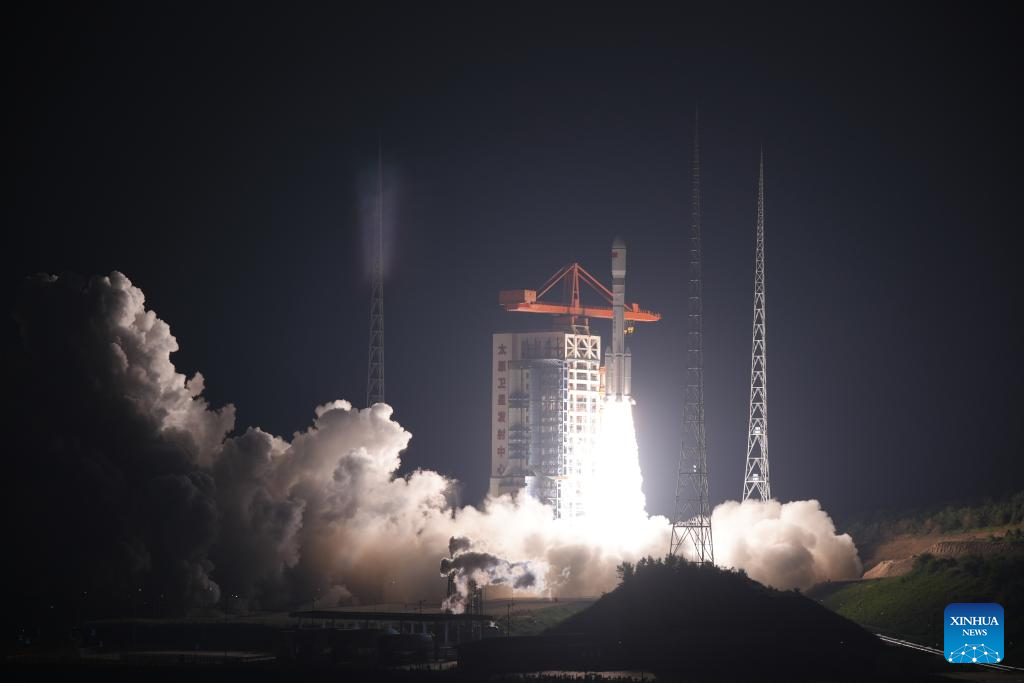
China launched a group of internet satellites into orbit on Sunday evening, marking the fifth in-orbit deployment of such spacecraft in a month.
The satellites are the ninth group of low-orbit hardware in China's State-owned internet network. They were lifted by a Long March 6A carrier rocket at 10:15 pm from the Taiyuan Satellite Launch Center in Shanxi province, and soon arrived in their orbital positions, according to China Aerospace Science and Technology Corp, the launch contractor.
Over the past month, five batches of satellites have been sent into orbit for the in-orbit networking of the country's massive space-based internet system, which is often likened to a Chinese version of SpaceX's Starlink.
The fifth group in the network was launched on July 27, the sixth on July 30, the seventh on Aug 4, and the eighth on Aug 13.
The latest batch was designed and built by the Shanghai-based Innovation Academy for Microsatellites of the Chinese Academy of Sciences, and is tasked with using its Ka-band transmitters to provide communications and internet service to users.
ALSO READ: New satellites strengthen space network
The Long March 6A rocket model was developed by the Shanghai Academy of Spaceflight Technology, a CASC subsidiary, as a medium-lift launch vehicle. It consists of a 50-meter, liquid-propelled core booster and four solid-fuel side boosters. The core booster has a diameter of 3.35 meters and is propelled by two 120-ton thrust engines burning liquid oxygen and kerosene.
The rocket has a liftoff weight of 530 metric tons and is mainly used to transport satellites to multiple types of orbit, including sun-synchronous, low-Earth and intermediate circular orbit. When used to reach to the typical sun-synchronous orbit 700 kilometers above Earth, the model can carry satellites with a combined weight of more than 4.5 tons.
This is the third time the Long March 6A type has been used to carry out a flight for the internet network.


